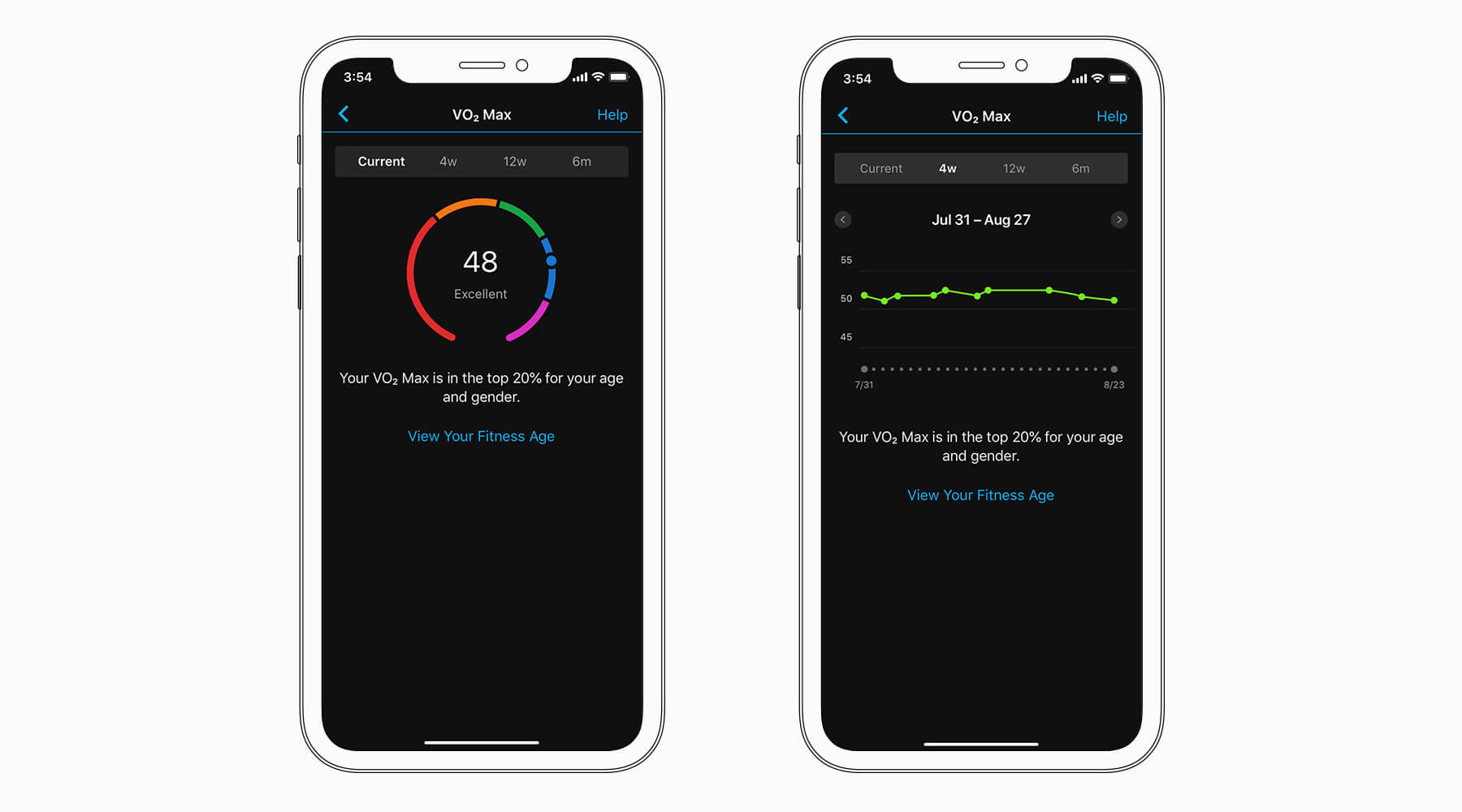
Fitness is more than a feeling. With the right tools it can be easily measured, and with the right perspective it can be easily managed. When health professionals talk about fitness, they are typically thinking in terms of cardiorespiratory fitness, which is measured in terms of VO2 max.
VO2 max is a single number that describes your cardiorespiratory fitness. It tracks the maximum amount of oxygen your body can utilise in a single minute of intense exercise. This information is essential for understanding your ability to fuel activity by using your aerobic energy pathways. In other words, the higher your VO2 max, the more oxygen you can import, transport and utilise to aerobically transform the energy stored in nutrients into performance.
Thinking about your fitness in terms of VO2 max — a vital health metric that is estimated by your Garmin device — has many advantages. These include knowing when you are fit enough to enjoy health benefits and when a lack of regular activity could be putting your well-being at risk.
When you want to work on improving your fitness, being able to track progress in terms of increases in your VO2 max can be a powerful motivation. It’s proof that you are on the right track, your hard work is paying off and your fitness is getting measurably better.
The value of VO2 max as a general health metric is undeniable. In 2016, the American Heart Association (AHA) issued an official position paper recommending that cardiorespiratory fitness, measurable in terms of VO2 max, be regularly assessed and utilised as a clinical vital sign. They cited a well-established and growing body of research documenting the relationship between cardiorespiratory fitness, health outcomes and mortality rates1.
When it comes to mortality, the AHA notes that cardiorespiratory fitness is an even more powerful predictor than traditional risk factors such as high blood pressure, smoking, Type 2 diabetes, high cholesterol and obesity.
Scientific study of how our bodies utilise oxygen and the role it plays in fitness and performance dates back nearly 100 years. For the most part, however, the role of VO2 max as a fitness metric has been limited to physiology research and findings by sports scientists who work with elite endurance athletes. This is because direct measurement of VO2 max requires an exhaustive treadmill test during which an athlete’s exhaled gases are captured and analysed in a laboratory2.
In recent years, advances in the combination of wearable technology and physiological analytics have made indirect estimates of VO2 max via performance data a fairly reliable alternative. It is now possible to produce a quality fitness level estimation during everyday walks and runs3. And easy access to this information has led to increased awareness of what cardiorespiratory fitness really means and how it can affect our health.
When it comes to understanding what your VO2 max means, higher is usually better. What a good level is for you depends on factors such as age and gender. This is because of normal differences in body composition (fat versus muscles, bones and organs) and the fact that our ability to utilise oxygen typically declines as we get older.
The good news is that practically anyone can improve their VO2 max with regular physical activity performed with the right combinations of intensity and duration. Unless, of course, you’re already a well-trained athlete with years of intense training under your belt.
Select Garmin devices automatically estimate your VO2 max each time you record a run or brisk walk with heart rate and GPS tracking activated. Over the course of your activity, the Firstbeat Analytics engine built into your device examines the relationship between how fast you’re moving and how hard your body is working to maintain that pace.
A few Garmin devices without built-in GPS are able to estimate your VO2 max using accelerometer data, by utilizing location from a paired smartphone or for cycling computers, based on GPS and power data.
Intelligence built into the analysis ensures that only the best, most meaningful portions of your performance data are used. This means that you don’t have to worry about speeding up, slowing down or whether you stopped a few times during your activity. You just go as you normally would, and your watch does the work of understanding when your performance accurately reflects your fitness.
While you don’t need to follow a strict testing protocol, your run or walk should last at least 10 minutes. This ensures that your muscles are warmed up and your heart, lungs and circulatory system activity has a chance to reflect the energy demand of your effort. For best results, at least a portion of your activity should be performed with at least 70% of your maximum effort.
Because the analysis is designed to learn about your own performance parameters and patterns over time, recording more walks and runs with your device improves the reliability of your VO2 max estimate.
